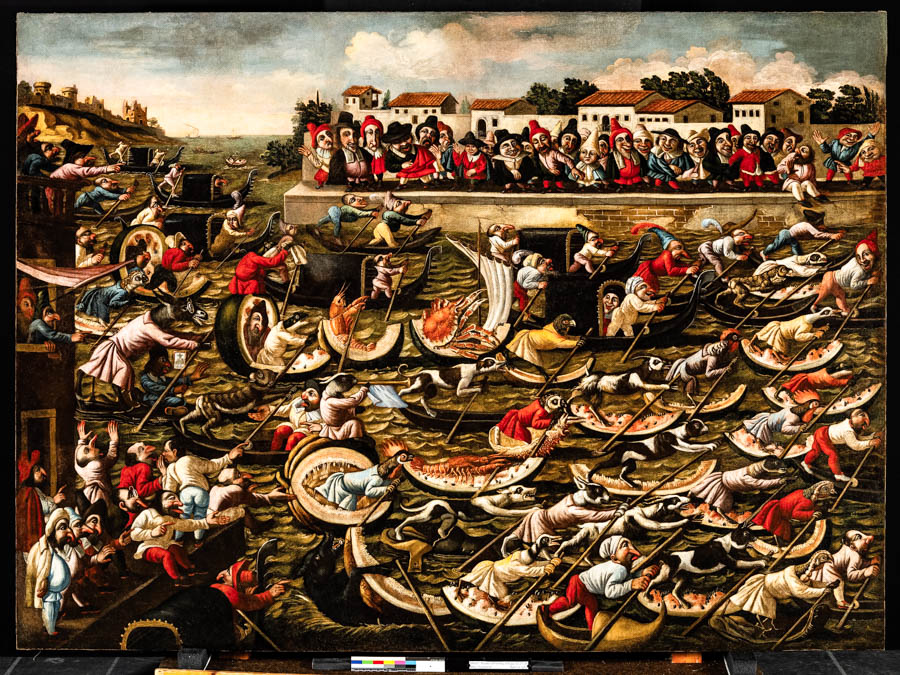Take one look at the early 18th-century Italian painting Watermelon Regatta and you’d never know the amount of work that has gone into making it a gallery worthy piece at The Ringling Museum of Art. You’d never guess that seven years ago, this whimsical painting from the early 1700s which depicts a gallery of dwarf-like figures cheering on a regatta of animals racing down a channel of water, was unrecognizable, a faded and cracked canvas of muted figures nearly devoid of color. However, that was exactly the goal of Barbara A. Ramsay, the chief conservator of The Ringling, and her team when they started on this lengthy conservation treatment of the painting back in 2016.
“We started slowly taking a closer look at the painting and it was obvious that it was very badly damaged and had been through a lot of previous restoration treatments because of the variety of materials that had been used and applied in different ways. There was a lot of loss, but it was felt that there was still enough of the original there that was very well painted that we could proceed with a treatment proposal and eventual treatment,” says Ramsay.
Several factors went into the decision to begin the conservation process, despite the high degree of damage. The first is that the oil painting on canvas which is part of The Ringling’s permanent collection of European paintings, is attributed to an unknown artist referred to as The Master of the Fertility of the Egg, whose work delves into a unique subject matter: fantastical paintings where animals often take the place of humans. The second is Watermelon Reggatta’s historical importance–the painting was purchased in 1950 by The Ringling’s first director, A. Everett Austin, Jr. before he donated it to the museum in 1951.
The reasons for the restoration process of Watermelon Reggatta, an effort originally spurred on by The Ringling’s 2016 Giving Challenge, are twofold. The first is because of the size of the canvas and the extent of the damage. The second is that there wasn’t a particular rush for the painting to be restored by a certain date, which allowed for an unintended benefit. “Because it was so large and had so many small damages throughout, it became a really excellent training tool. We take in conservation interns and fellows and have junior conservators who come in and they were able to learn a lot of different techniques on this one painting,” says Ramsay. “We knew that the restoration was going to take a while and it wasn’t required for exhibition or for loan, which drives a lot of demands on the conservation time here. It’d sit for a bit, we’d get another fellow to take it the next step further and that’s why it sort of dragged out over many years. In the end, I ended up hiring some private painting conservators to help with the in-painting and move it along more quickly.”
For the biggest challenge of restoring the Watermelon Regatta? Determining just how much of the original painting could be saved. “There were a number of different stages in the restoration process to assess the material and structure of the painting, the condition and figuring out what were the causes of damage. Obviously the painting hadn’t been handled well and there’d been a lot of paint loss and a lot of inexpert ‘restoration’ that was done over the years with a whole range of materials and covering a lot of the original paint,” says Ramsay with a chuckle. “And that was the main issue: we wanted to determine how much original paint was still there under all this mess. It was really kind of an excavation to uncover the amount of original paint that actually existed.”
Over the years, however, using solvents and gels and scalpels to remove layers of overpaint and varnish to finally adding onto the original paint, Ramsay and her team gave new life to the Watermelon Regatta. It was a journey, painstaking, laborious and slow, but one that was well worth it.









